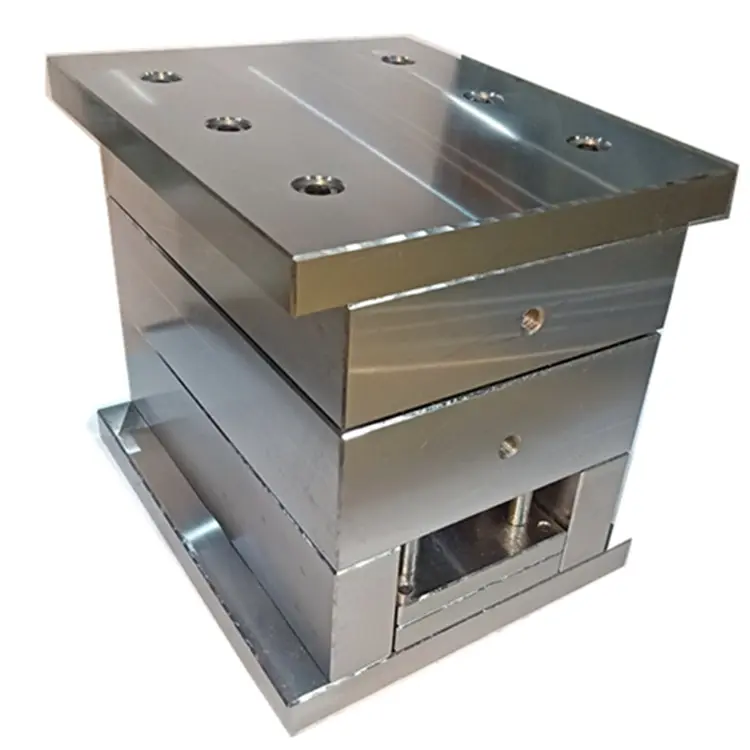The die base is a crucial component in the manufacturing sector, serving as the foundation for various stamping dies used in metal forming processes. Understanding its origins, materials, and evolution can enhance manufacturing processes and drive economic growth, especially in Vietnam's burgeoning industrial landscape.
What is a Die Base?
A die base is a structural element that supports stamping dies, which are tools that cut or shape materials, typically metal. The die base must be robust and precise, ensuring that the stamps operate effectively while maintaining high quality in the finished product. The construction materials and design of the die base significantly impact the lifespan and performance of the stamping die.
Material Composition of Die Bases
Over the years, various materials have been utilized for die bases, and understanding these materials is essential for manufacturers in Vietnam:
- Steel: The most common material due to its strength and durability.
- Aluminum: Known for being lightweight and cost-effective but less durable than steel.
- Composite Materials: Emerging as a viable option for specific applications, providing a good balance of weight and strength.
Historical Development of Die Bases
The evolution of die bases can be traced back to the early 20th century, where traditional methods focused on heavy metal constructions. With advancements in technology, die bases have evolved to include more sophisticated designs and materials. Significant trends influencing their development include:
- The Rise of Automation: As manufacturing processes became automated, die bases had to adapt to new machines and technologies.
- Globalization: The demand for high-quality manufacturing has led to competitive pressure, driving innovations in die base production.
- Research and Development: Ongoing R&D efforts have fostered the creation of more efficient and durable die bases.
The Importance of Die Base in Vietnam's Manufacturing
Vietnam's manufacturing sector is rapidly growing, making it crucial to ensure that die bases meet the industry standards of quality and efficiency. The significance of die base in this area includes:
- Cost Efficiency: Durable die bases contribute to reducing operational costs through lowered maintenance and replacement frequencies.
- Quality Assurance: A well-designed die base results in superior finished products, which is critical for maintaining competitive advantage.
- Innovation Opportunities: With proper investment in die base technology, Vietnamese manufacturers can enhance their capabilities and explore new markets.
Challenges in Die Base Manufacturing
While die bases are essential, several challenges face manufacturers in Vietnam:
- Resource Limitations: The local availability of high-quality materials can hinder the production of competitive die bases.
- Skill Gaps: As the industry evolves, there is a need for skilled personnel who understand the intricacies of die base design and production.
- Technological Adaptation: Keeping up with international standards and technologies can be challenging for local firms.
Frequently Asked Questions (FAQ)
1. What factors should be considered when selecting a die base?
Key factors include material strength, weight, cost, compatibility with existing machinery, and the specific requirements of the manufacturing process.
2. How can manufacturers improve the lifespan of die bases?
Regular maintenance, proper handling, and utilizing high-quality materials can significantly extend the lifespan of die bases.
3. What are the emerging trends in die base technology?
Trends include the use of advanced materials, automation in manufacturing, and the incorporation of smart technologies for performance monitoring.
4. How does the choice of die base material affect production?
The choice affects durability, weight, cost of production, and the quality of the final product. For instance, steel offers strength, while aluminum is lightweight but may not withstand high-stress applications.
5. Why is R&D important in die base manufacturing?
Research and development pave the way for innovative solutions that enhance efficiency, reduce costs, and improve product quality in the manufacturing sector.
Conclusion
In conclusion, a thorough understanding of die bases is vital for the growth of Vietnam’s manufacturing sector. From selecting the right materials to embracing modern technological advancements, manufacturers must focus on improving die base production to remain competitive. By navigating the challenges while leveraging the opportunities in this domain, Vietnam can enhance its manufacturing prowess and drive economic growth.

